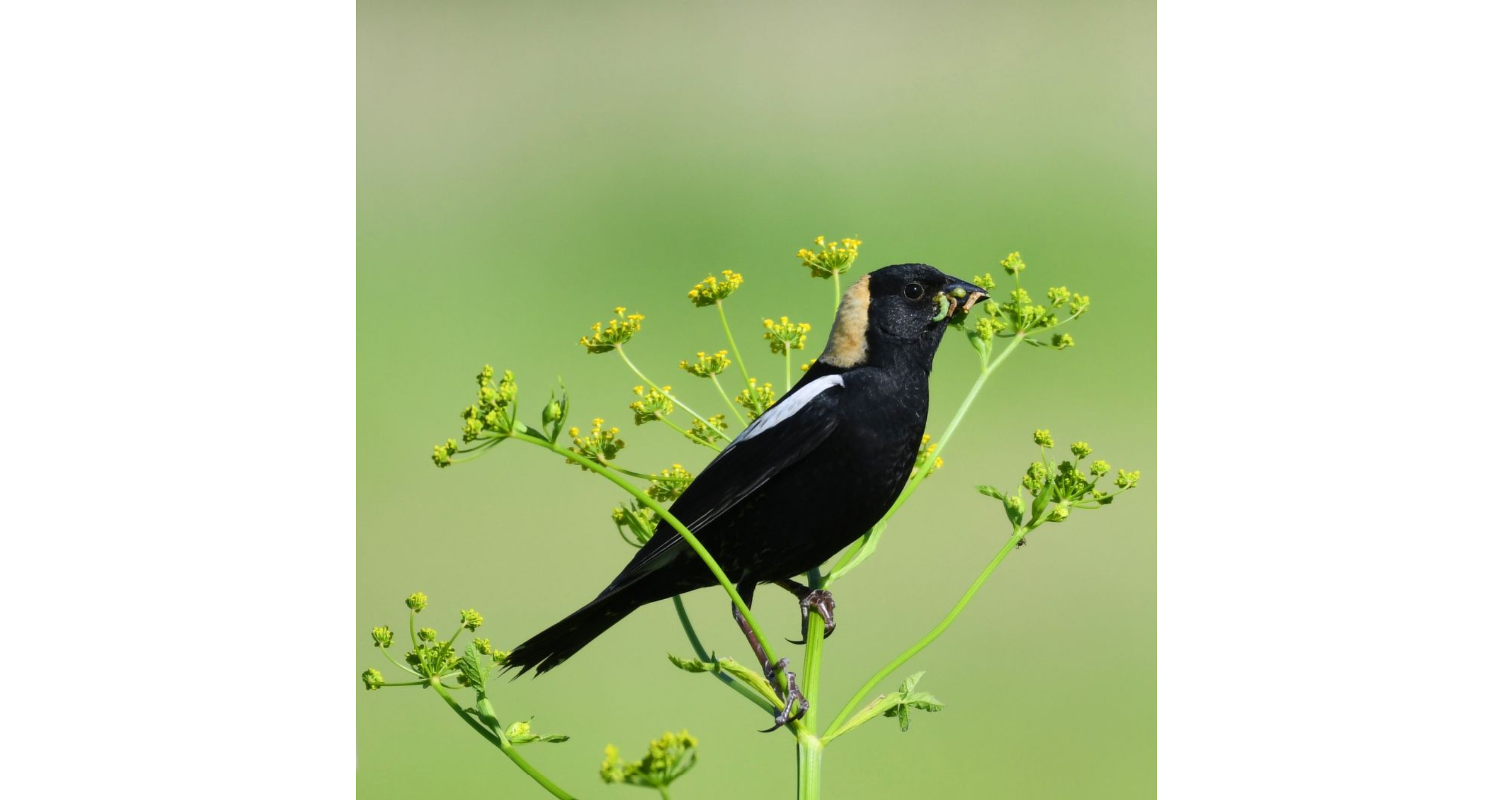A landfill can be more than a garbage dump. It can be a place of ecological renewal. The latest example at Fairfax County’s I-95 landfill is a plan to protect some of the landfill’s grassland habitat for ground-nesting birds and other wildlife.
On Feb. 20, the Board of Supervisors directed the county staff to identify a no-mow area and develop a plan to avoid mowing during grassland birds’ ground-nesting season, generally between April 1 and mid-July. Supervisors Dan Storck, James Walkinshaw and Jeff McKay proposed the initiative or “board matter,” recommended by the Audubon Society of Northern Virginia. Supervisor Storck offered, “I was pleased to bring this Board matter to my colleagues and received unanimous support. The County continues to lead on environmental and climate issues and becoming a leader in landfill grassland management to protect ground-nesting birds is just another example.”
The directive recognizes that some mowing is needed for inspecting the landfill cap, accessing gas wells and accommodating stormwater drainage. The Virginia Department of Environmental Quality requires mowing at least once a year. Managers seek to discourage trees from taking root and disrupting landfill caps.
“We are looking forward to developing a mowing schedule that helps protect nesting habitat for grassland species at the I-95 landfill complex,” explained Eric Forbes, deputy director, Department of Public Works and Environmental Services. “For the mowing schedule change, we will be doing a pilot to see how we can manage the landfill functions at the site and evaluate any potential operational issues.”
Grasslands Are Rare
Of the United States’ historical 550 million acres of grasslands, fewer than 40 percent exist today. Justin Folks, with the Natural Resources Conservation Service, has noted that much of today’s Virginia croplands were grasslands before European colonization and now grassland acreage in the state may be less than .0001 percent.
Part of Fairfax County’s 250-acre-closed, I-95 landfill, though created by people, is in effect a grassland, a rare habitat in Fairfax County. The landfill’s

meadow and grassland and other habitats support over 126 bird species according to ebird.org, including grassland specialists like bobolinks, dickcissels and grasshopper sparrows, plus other wildlife species found nowhere else in Northern Virginia. In Virginia, over 50 bird species rely on grasslands.
Grassland Birds Declining
Grassland birds are among the most imperiled group of birds, reports the National Audubon Society. Their population has dropped by 53 percent since 1970, according to the Virginia Grassland Bird Initiative.
Local bird watchers have especially delighted in seeing bobolinks and dickcissels, two ground-nesting birds, among others, at the landfill.
Bobolinks fly up to 12,500 miles roundtrip to and from South America every year and seek out fields of tall grasses. Sporting a bright yellow “cap,” the male perches on the grasses, flutters and sings. The female bobolink makes a depression in the soil and builds a nest on the ground.
Dickcissels also come north in the spring from the tropics and find grassy fields. These sparrow-like birds also build nests on or near the ground, well concealed in dense vegetation. “Male dickcissels are aggressive defenders of their primary territory, keeping a close eye on their immediate neighbors by confronting each other at territorial boundaries,” reports All about Birds.
Auduboner Greg Butcher, an ornithologist, commented, “The I-95 landfill provides the biggest patch of grass in eastern Fairfax County. The birds have found it and breed there in good numbers. By mowing less, we can keep grassland birds in eastern Fairfax County.”
More “Greening” of the Landfill
Toward the end of 2024, the county will install a five-megawatt solar field with pollinator-friendly, native vegetation under the panels and energy production beginning mid-2025.
The county started a honeybee and pollinator habitat project in 2017, converting five acres of turf into native meadow habitat. George Mason University installed 24 European honeybee hives at the landfill, led by Director Germán Perilla. The project’s website cites as the purpose “to assess the connections between honeybees and their local environment, specifically with regard to the pollen resources they use and contaminants that they might introduce to and accumulate within their hives.”
Information
* Fairfax County Landfills, https://www.fairfaxcounty.gov/publicworks/recycling-trash/locations-hours
* GMU Honeybee Hives, http://bees.gmu.edu
* Smithsonian Guidelines for Grassland and Shrubland Birds, https://www.vaworkinglandscapes.org/education/resources/field-management-guidelines-for-grassland-birds/
* Audubon Grassland Birds Report, https://www.audubon.org/our-work/prairies-and-forests/grasslands-report
